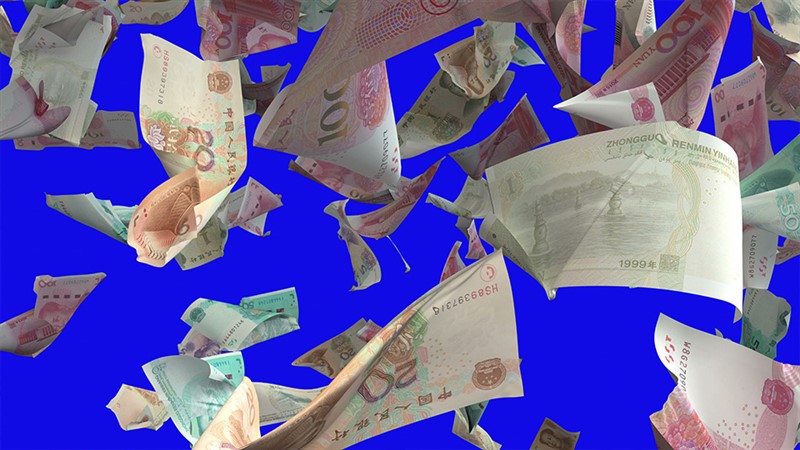Banker's Digest
2022.06
Outflows from China's Bond Market Driven by the Fed, Ukraine and COVID

Since the pandemic, China has experienced a rapid increase in its trade surplus and foreign investment, bringing its net forex receipts to a record high of $356 billion in 2021. However, the trend ended in February 2022, which is the first net outflow after 22 months of inflow. Analyzing China's current and financial accounts, conclusions can be drawn as to the reasons for the recent switch from capital inflows to outflows and what to expect in the coming months. Net exports contributed positively to China's forex receipts regarding the current account. The strong global demand for electronics and healthcare products is a crucial factor. The vanished outbound tourists from China also reduced capital outflow by slashing imports of services (9% of total imports and 50% of services imports in 2019). Still, it is uncertain if China can keep up the large trade surplus this year, given the rapid slowdown in external demand and high commodity prices. Foreign direct investment (FDI) is also not the origin of outflows. Global firms have continued to expand operations in China faster than Chinese firms investing overseas. Indeed, securities investment is the primary source of capital outflow. China saw net capital outflows of $32 billion in February 2022, which is the largest outflow since March 2020. The average monthly capital inflow was $9 billion in 2021. There are potential reasons for this sudden reversal of capital flow. First, the Ukraine-Russia war is an important risk-off event. Investors generally saw China as a safe haven in previous risk-off events. This perception means China could have attracted capital redirected from emerging economies. However, this was not the case. Second, there are rumors that Russian investors – whose holdings of Chinese bonds hover around $140 billion – may have sold their assets for cash. Beyond the Russia factor, the sovereign yield differential between China and the US became negative in March, while it had been as large as 300 basis points only a year ago. Against such backdrop, if 2021 was not a calm year for investors in Chinese bonds, recent developments suggest 2022 will not be better with the unprecedented selloff of Chinese bonds by foreign investors since March. The pressure has only aggravated in April. With geopolitical risk and economic pressure in mind, the rapid Fed tightening has also led to growing interest rate differentials between China and the US. The war in Ukraine has sparked risk-off sentiment in China, especially with potential secondary sanctions. And the economic drag from China’s omicron wave also poses extra risks to corporate profits. Regarding interest rate differentials, the hawkish Fed has narrowed the yield spread between 10-year Chinese and US sovereign bonds from 127 bps in December 2021 to almost zero in April 2022. Offshore yield for bonds issued by Chinese firms surged from 3.47% to 5.29% for the same period. Conversely, onshore funding costs declined slightly from 3.4% to 3.31%, broadly in line with the 10bps rate cut by the PBoC earlier this year. The laxer onshore monetary condition has led to higher net bond issuance in Q1 2022, but the primary beneficiaries are state-owned enterprises, reflecting a policy bias. The problem remains challenging in the offshore market with negative net bond issuance, showing the dilemmas for Chinese private real estate developers. Amid the poor sentiment, the concern of credit risk remains on investors' radars. Bond yields in onshore and offshore bonds issued by private firms surged together, driven by the real estate sector. The real estate is the sector has the biggest bond repayment pressure and the increasingly low – in same case negative – growth of housing prices and plummeting housing sales are clearly not helping prop-up the beleaguered sector. In fact, the ratio of offshore bonds with repayment pressure further increased from 6.4% in 2021 to 6.8% in March 2022, with a heavy proportion in the property sector. Although the overall sentiment on real estate has bottomed out, the market still perceived 38% of developers as negative in March 2022, higher than 35% at the end of 2021. Notwithstanding the still obvious credit risk, there are positive changes in relaxing regulations and financing channels for property developers, but the magnitude is not big enough to reduce the credit polarization. Going forward, China and the US will embark on different monetary directions as they face different economic problems. For China, the never-ending lockdowns can haunt its growth prospects, meaning there is room for even more accommodative monetary policies. In the US, the Fed has no choice but to hike rates given the inflationary pressure. In the short run, the yield differential between China and the US will only widen, and the only question is how much and how quickly it will be. With the weakening RMB, investors may move from selective within China towards exploring choices within the world. In the medium run, China will remain a market that is too big to ignore and attractive for foreign investors once the monetary tide turns again.



